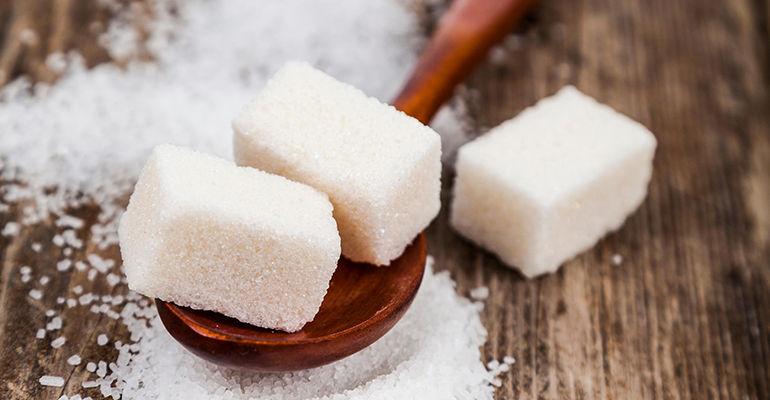Welcome to SJGLE.com! |Register for free|log in
Welcome to SJGLE.com! |Register for free|log in

Related Searches: Tea Vitamin Nutrients Ingredients paper cup packing
The 2019 announcement marked the first time the FDA allowed a sugar to be exempt from the US on-pack sugar labelling requirement and was a reflection of its “flexible and science-based approach to food product labelling”, it said.

“The latest data suggests that allulose is different from other sugars in that it is not metabolized by the human body in the same way as table sugar. It has fewer calories, produces only negligible increases in blood glucose or insulin levels, and does not promote dental decay,” said Mayne, Ph.D., director of FDA’s Center for Food Safety and Applied Nutrition, adding that allulose would still count towards the caloric value of the food on the label and must still be declared as an ingredient.
The FDA then launched a request for comments in October last year, inviting food industry stakeholders to share feedback on whether other non-traditional sugars, such as tagatose, allose and isomaltulose, should be treated differently for labelling purposes.
“We are interested in learning more about the kinds of sugars that are metabolized differently than traditional sugars and that are used in foods, any distinct physiological effects in the body caused by those sugars, and how we should treat those sugars for purposes of food labelling,” it said.
We take a look at some of the comments and suggestions received by the food safety authority.
Rare sugars are not metabolised like sucrose
Virginia-headquartered Bonumose has filed a citizen’s petition requesting the FDA to exempt tagatose from a sugar declaration on the grounds it is a carbohydrate that meets the definition of a dietary fibre, and it said on-pack nutrition information should reflect this.
“We suggest that FDA consider whether the carbohydrate would more appropriately labelled as dietary fibre,” it said.
Sweetener supplier Tate & Lyle argued that it would be misleading to include rare sugars, such as allulose, tagatose and isomaltulose in the added sugar declaration, as consumers would assume these sugars have the same impact as traditional sugars such as sucrose, namely increasing blood glucose and insulin levels and contributing to dental caries.
The Food Lawyers: ‘Out of place in the sugar declaration’
Los Angeles-based The Food Lawyers also said rare sugars, such as allulose, tagatose and allose, were “out of place” in the total sugar and added sugar declarations because they are metabolised so differently from sugar.
It urged the FDA to establish a new category of sugars called ‘rare sugars’ and suggested criteria for inclusion in this category: sugars that impart at least 50% of the sweetness of sucrose; that provide 2.0 kcal per g or less; that result in a pH of 6.0 or more of dental plaque after consumption; and that elicit a zero or low glycaemic and insulinemic response.
“We feel the above approach creates a ‘win-win’ atmosphere wherin industry will be motivated to substitute rare sugars for traditional and familiar sugars, and the public will receive both the immediate benefit of an increased number of food product choices utilizing Rare Sugars as well as the longer-term health benefits offered by Rare Sugars because they are metabolized differently than traditional sugars.”
However, The Food Lawyers noted that, although isomaltulose is metabolized differently in the body and the mouth compared to traditional sugars, it is completely hydrolyzed within the small intestine and provides a full 4 kcal per gram.
“[This renders] it less useful from a public health perspective regarding obesity than other members of its class,” it added.
Unilever: No need for a new nutrient category
General Mills was in favour of creating a separate voluntary declaration for a rare carbohydrate, in addition to the mandatory ingredient list declaration. It said this would allow for greater transparency to consumers and help educate consumers on the physiological benefits of this class of ingredients.
Unilever, however, did not support creating a new category for the sweeteners.
“There is no need to further complicate the Nutrition Facts label by creating a new nutrient category for sugars metabolized differently than traditional sugars,” it told the FDA. “Sugars such as allulose and tagatose are considered ketohexoses and as such, we see no need to create a new ‘saccharide’ line on the Nutrition Facts label to accommodate these sugars - they fit within ‘Total Carbohydrates’ on the Nutrition Facts label.”
Hershey & Bonumose identify other rare sugars of interest
The Hershey Company suggested some additional non-traditional sugars that may have the same effects as allulose and thus be of interest to food manufacturers. These include the monosaccharides sorbose, ribose, allose, and L-arabinose, and the disaccharides trehalose and kojibiose, it said.
“Although the quality and quantity of evidence with respect to some of these ingredients is limited, we urge the Agency to develop guidance on non-traditional sugars as a category that is broad enough to allow for and, indeed, incentivize continued work in identifying and developing these ingredients for commercial use,” wrote Hershey.
Bonumose noted that its technology could ALSO be used to produce other rare sugars, such as D-allose, D-altrose, D-gulose, D-idose and D-talose that are not yet commercially available.
E-newsletter
Tags